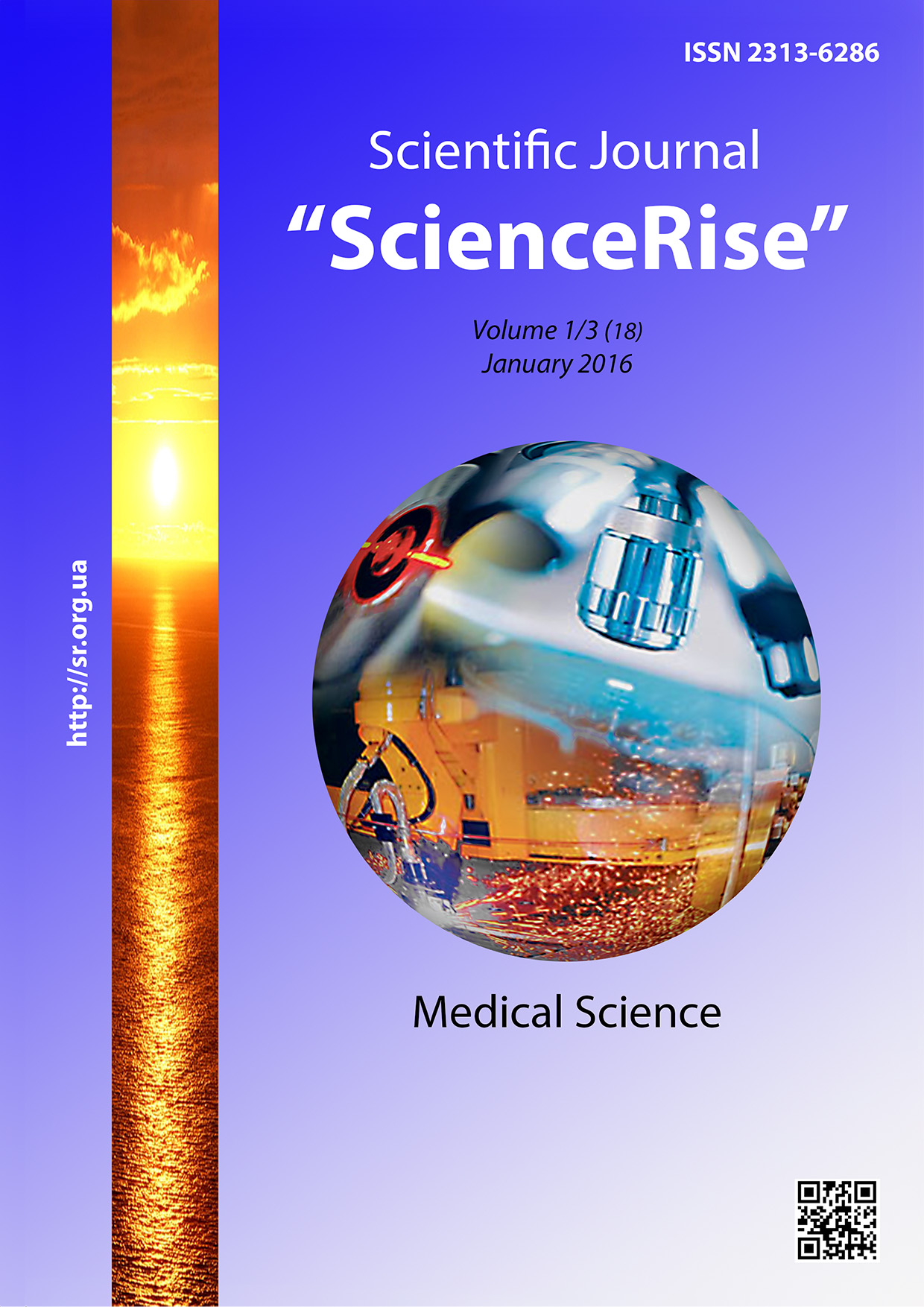Functional state of palatine tonsils in children with diabetes type 1
DOI:
https://doi.org/10.15587/2313-8416.2016.59330Keywords:
chronic tonsillitis, palatine tonsils, cytology, diabetes mellitus type 1, childrenAbstract
Actuality. Chronic disease of lymphoepithelial throat structures (CHLTS) in children with diabetes mellitus type 1 (DM-1) are widespread according to our earlier studies. The frequent exacerbations lead to the rise of glycemia profile, worsening of patient life quality and effectiveness of the complex therapy of the main disease.
Aim of research: to assess the functional state of palatine tonsils in children and teenagers with DM-1 and chronic tonsillitis.
Materials and methods. During the period 2014-2015 years there was carried out clinical and laboratory examination of 51 children with DM-1 6-18 years old. All children were treated in endocrinological department of National child specialized hospital “Ohmatdit”. The main group of observance included 40 children with DM-1 and CT, the control one included 11 children and teenagers with DM-1 without ENT-pathology. All children of the main and control groups underwent cytological examination of the tonsillar crypt lacunas content.
Results and discussion. The highest specific weight of the chronic diseases of lymphepithelial throat structures (CDLTS) in the main group of observation was revealed at the presence of chronic tonsillitis. In children with DM-1was diagnosed CT – 17 (33,3 %), CT and nasal septum curvature– 16 (31,3 %), CT and adenoid – 9 (17,7 %), CT and palatine tonsils hypertrophy – 5 (9,8 %), CT and recidivous nasal bleedings – 4 (7,8 %). According to the results of this examination in children with CDLTS and DM-1 were separated the four cytological groups that characterize the functional state of palatine tonsils.
I. Good functional power of palatine tonsils.
II. High activity of lymphoid tissue of palatine tonsils.
III. Compensated functional power of palatine tonsils.
IV. Decompensation of palatine tonsils functions.
Conclusion. Cytological examination of tonsillar crypt lacunas content in children and teenagers with DM-1 may be the accessible and informative method of assessment of the functional activity of palatine tonsils, for more precise diagnostics of CT in patients with DM-1, the detection of its form, an effectiveness of the treatment
References
Lajko, A. A., Kosakovs'kyj, A. L., Zabolotna, D. D. et. al (2013). Dytjacha otorynolaryngologija. Kyiv: Logos, 575.
Zelins'ka, N. B., Globa, Je. V., Pogodajeva, N. L. (2013). Statystyka cukrovogo diabetu u ditej v Ukrai'ni (analiz i prognoz). Klinichna endokrynologija ta endokrynna hirurgija, 42 (1), 80–83.
Gurov, A. V., Birjukova, E. V., Jushkina, M. A. (2011). Sovremennye problemy diagnostiki i lechenija gnojno-vospalitel'nyh zabolevanij LOR-organov u bol'nyh saharnym diabetom. Vestnik otorinolaringologii, 2, 76–79.
Lajko, A. A., Gavrylenko, Ju. V. (2014). Harakter urazhennja LOR-organiv u ditej, hvoryh na cukrovyj diabet 1 typu. Rynologija, 1, 61–65.
Boisvert, M. R., Koski, K. G., Burns, D. H., Skinner, C. D. (2012). Prediction of gestational diabetes mellitus based on an analysis of amniotic fluid by capillary electrophoresis. Biomarkers in Medicine, 6 (5), 645–653. doi: 10.2217/bmm.12.53
Scardina, G., Cacioppo, A., Pisano, T. et. al (2011). In vivo evaluation of labial microcirculation in diabetics: a comparison of healthy subjects. Panminevra Med., 53 (2), 81–85.
Gavrilenko, Ju. V. (2015). Kliniko-jepidemiologicheskie aspekty zabolevanij lor-organov u detej s saharnym diabetom 1-go tipa. Mezhdunarodnyj nauchno-prakticheskij zhurnal «Pediatrija. Vostochnaja Evropa», 4 (12), 68–75.
Hmel'nickaja, N. M., Vlasova, V. V., Kosenko, V. A. (2000). Ocenka funkcional'nogo sostojanija nebnyh mindalin u bol'nyh hronicheskim tonzillitom. Vestnik otorinolaringologii, 4, 33–39.
Mal'ceva, G. S., Kosenko, V. A., Janov, Ju. K. (2009). Sposob opredelenija funkcional'noj aktivnosti nebnyh mindalin. RU 2361210 ot 10.07.2009.
Ponomarev, L. E. (2012). Ocenka funkcional'nogo sostojanija nebnyh mindalin metodom citologicheskogo issledovanija soderzhimogo ih kript pri hronicheskom tonzillite. Medicinskij vestnik Severnogo Kavkaza, 4, 45–46.
Danilov, R. K. (2010). Rukovodstvo po gistologii. Sankt-Peterburg: SpecLit, 405–408.
Staroha, A. V., Shilov, B. V., Dolgun, D. A. (2007). Morfofunkcional'noe sostojanie kletok nebnyh mindalin u bol'nyh hronicheskim tonzillitom. Rossijskaja otorinolaringologija, 1 (26), 3–8.
Downloads
Published
Issue
Section
License
Copyright (c) 2016 Юрий Владимирович Гавриленко, Андрей Афанасиевич Лайко, Ирина Евгеньевна Волгина

This work is licensed under a Creative Commons Attribution 4.0 International License.
Our journal abides by the Creative Commons CC BY copyright rights and permissions for open access journals.
Authors, who are published in this journal, agree to the following conditions:
1. The authors reserve the right to authorship of the work and pass the first publication right of this work to the journal under the terms of a Creative Commons CC BY, which allows others to freely distribute the published research with the obligatory reference to the authors of the original work and the first publication of the work in this journal.
2. The authors have the right to conclude separate supplement agreements that relate to non-exclusive work distribution in the form in which it has been published by the journal (for example, to upload the work to the online storage of the journal or publish it as part of a monograph), provided that the reference to the first publication of the work in this journal is included.

